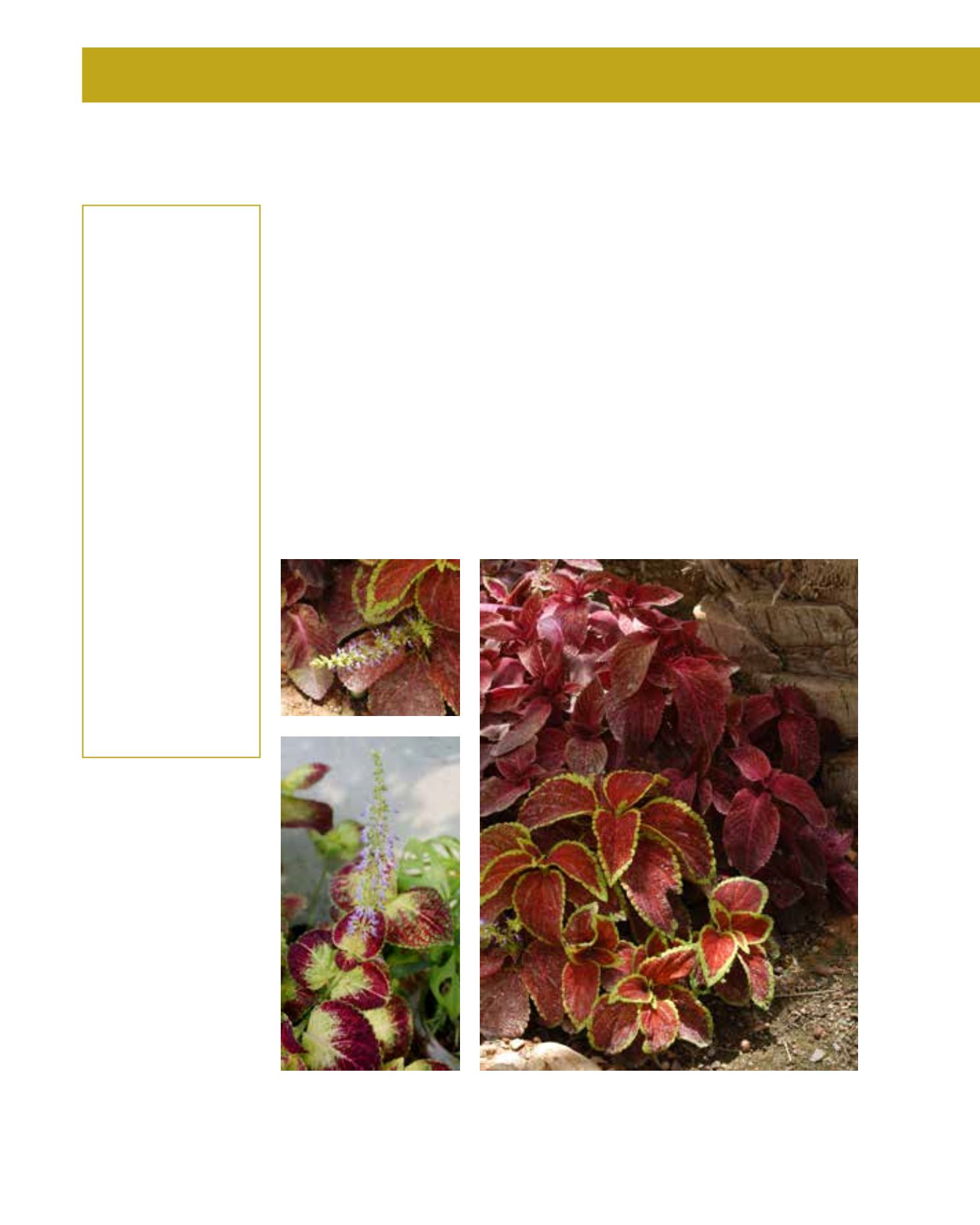

GENERAL
Origin
:
sub-tropical,
tropical
Vigour
:
fairly fast
growing
Humidity
:
very humid,
extremely humid
Propagation :
sowing and
pricking out,
cuttings
Maintenance :
high
CONDITIONS
Urban climate :
vulnerable
Dessication :
vulnerable
Stagnant water :
vulnerable
Irrigation
:
high
Salinity/ppm :
low (700 ppm)
Hardiness
:
+3°C
SHAPE
Type
:
annual, biennial,
perennial
Height
:
0.2 m-0.5 m
Spread
:
0.3 m-0.6 m
Foliage
:
evergreen
FLOWER
Colour
:
pale blue
Size
:
12 cm
Period
:
July - August
FRUIT
Type of fruit :
nutlet
Fruit size
:
0.3 cm
Toxicity
:
inedible
The Painted Nettle is one of the most popular plants for interior greening, and is widely used
outdoors where its conditions are met. They are tender perennials from southeast Asia found in
shady, humid environments. If grown as bedding plants, they create masses of multi-coloured fo-
liage to a height of about 30 cm. They are more valued when planted in mixed borders, where they
grow twice as high to form a round, bushy eye-catcher. The variegation is outstanding, in shades
of green, yellow, scarlet, red, pink and ivory. Terminal flower spikes feature azure florets that are
usually pinched out, since the foliage is this plant’s main, spectacular attraction. In Arriyadh’s
winters, Painted Nettles take full sun, but during the summer they are best sheltered, especially
during the afternoons. Frost instantly kills this plant, and strong winds twist the leaves or entire
branches. It appreciates fertile soil with ample water, but without waterlogging. It is very easy to
grow in pots and containers. The easiest method of propagation is by placing cuttings in water or
planting them in a mixture of peat, compost and sand with some cover to reduce transpiration.
Sowing is an alternative in order to pick one of many colourful varieties, or to achieve random
forms. They respond well to fertilising and do best with occasional pruning to rejuvenate the
stems. Frequent pinching is recommended to form a denser habit. Their moderate to high mainte-
nance requirements limit the use of Painted Nettles to well-kept gardens and pedestrian precincts.
237
Plectranthus scutellarioides,
Lamiaceae
Painted Nettle
















